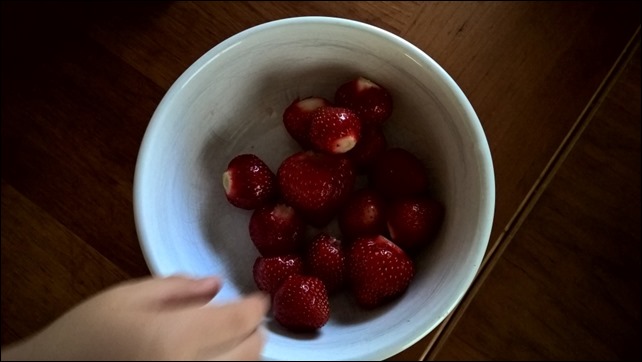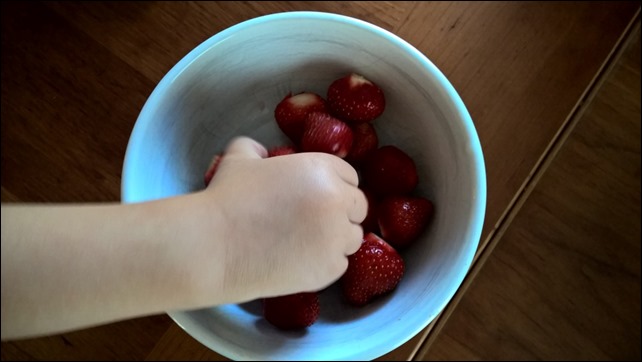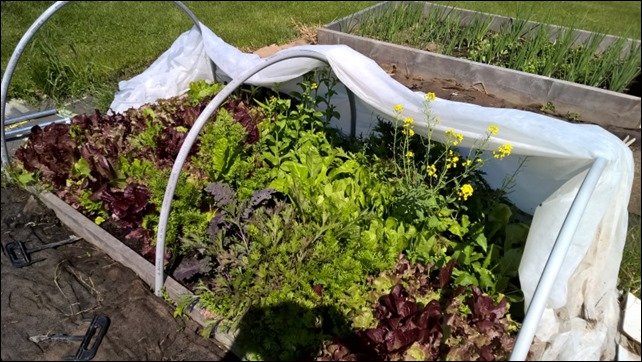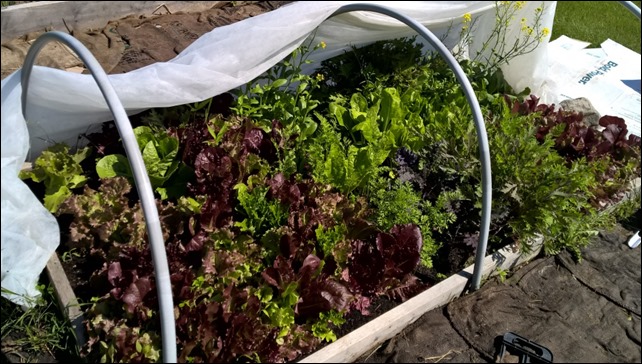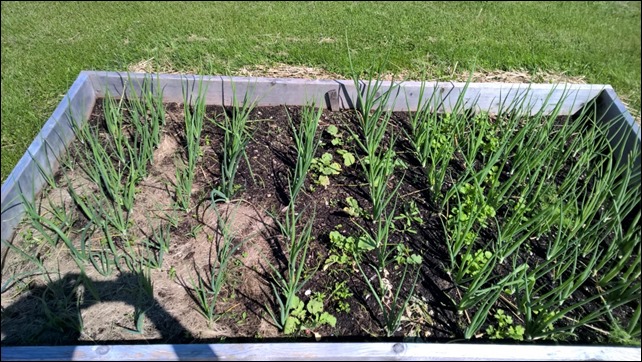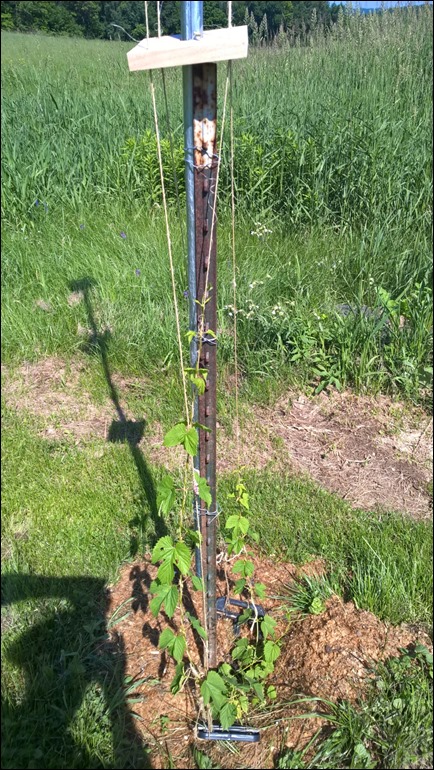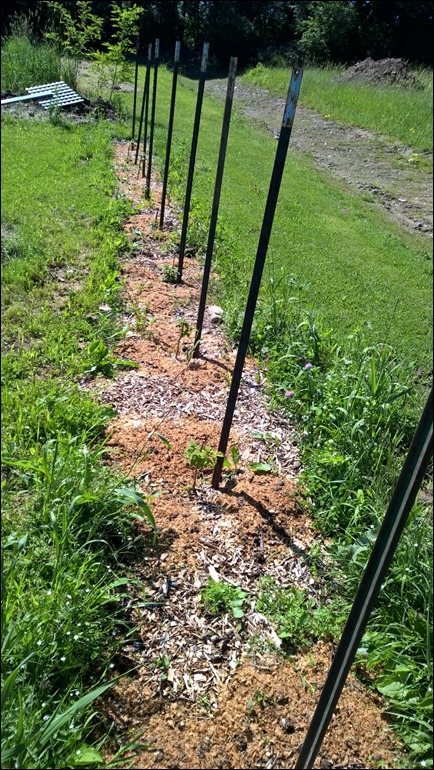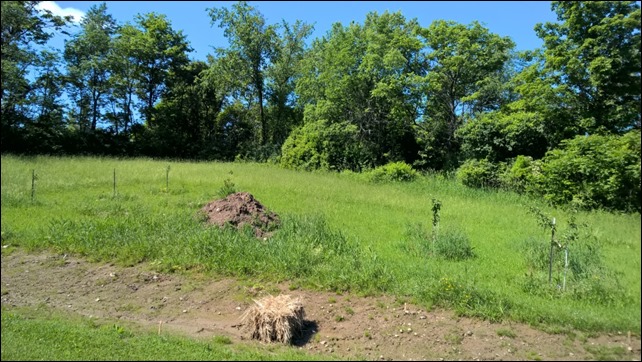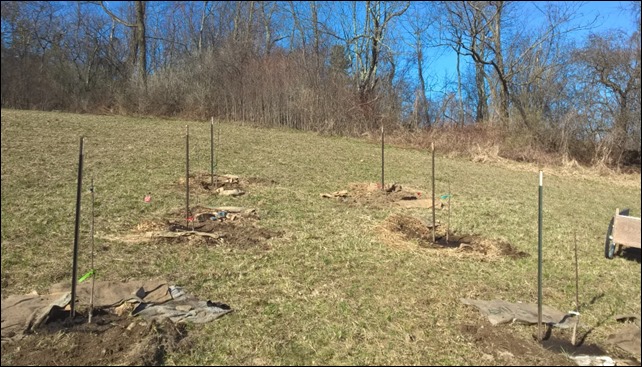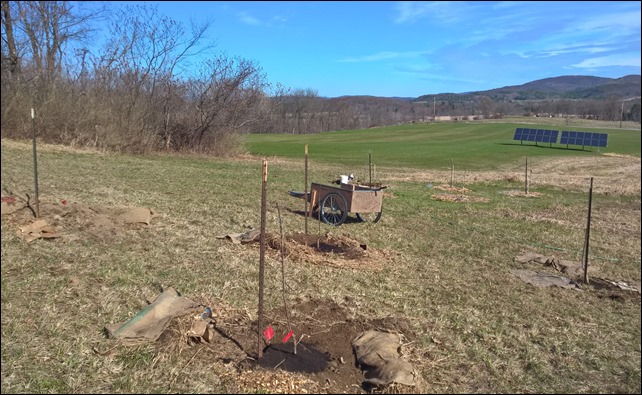Lots of life stuff to deal with so far this year, but I wanted to just get a few notes in about what we’re working on this spring. So far it’s been very wet, so I think it’s going to take a bit longer to get certain things in the ground than last year. That being said, the soil structure in the garden continues to improve, so that helps.
Last week we planted probably the last larger order of fruit trees in the orchard. At this point there are probably enough trees out there. Still a chance we’ll include some additional fruit trees in a food forest/ wind break or something elsewhere on the property, but we’ll see. This year we planted the following:
- Ashmead’s Kernel – great heirloom, good for cider, drying, etc.
- Chisel Jersey – this one isn’t much use for anything but cider
- Dabinett – another English cider apple, we already have one of these started from a previous year. Makes an amazing single varietal cider.
- Golden Hornet – cool crab apple type with yellow fruit, very nice in the spring as well and a great pollinator
- Redfield – another cider apple
- Spitzenburg Esopus – second one of these as well, the first one we planted is probably one of our best trees so far. This is one of the varieties Thomas Jefferson was infatuated with.
- Mount Royal Plum – first plum tree, hardy to zone 3, curious how this one does
- Northstar Cherry – not having great luck with getting cherries started, so planting another. Much more susceptible to transplant shock than apples.
I did a count and I think this brings us to around 30 trees, give or take. If I can get even half of these to thrive, we’ll have more fruit than we know what to do with. We’ll let you know when that happens in case you are close enough to enjoy some yourself.
Otherwise, seed starting continues to go well. Tomatoes are going gangbusters and I’m running out of room to the point that I’m already putting some extras in the greenhouse. Calculated risk as it may still get too cold, but if not they will be hardier and bigger when we transplant. Probably going to share some seedlings as well. We started some seeds Kristin saved and got really good germination on all of them, so we’re curious to see how true to type those are. This was a bit of an experiment to see how well we could do at growing our own saved tomato seed, so this year we may be a bit more intentional to avoid cross-pollination.
We aren’t doing a ton of new things this year, but Kristin is getting more and more interested in medicinal herbs and plants so we are trying to grow a few more of those type of plants. We are also trying to get comfrey going in the orchard (non-invasive type that makes sterile seeds). Comfrey is great for all kinds of things and will outcompete some of the undesirable grasses and weeds in the orchard to eventually become a living mulch. When it gets tall, it falls over so it almost does the mulching for you. Tons of nutrients and minerals and good for the soil as well. I’m also trying to see if I can start some perennial shrubs from seed (sea buckthorn, service berry, Siberian pea shrub). This requires cold stratification (basically starting for a few months in soil in a fridge) and getting to transplant stage takes two growing seasons, so it’s a multi-year experiment.
The other big spring project is re-doing our back deck. This will be a lower deck, almost at grade (basically 1 step down to the ground). We plan to put some beds around the perimeter of that and probably some cedar planters so we can have some herbs and flowers within steps of the back door. Hope to post pictures of that process once we get started.

